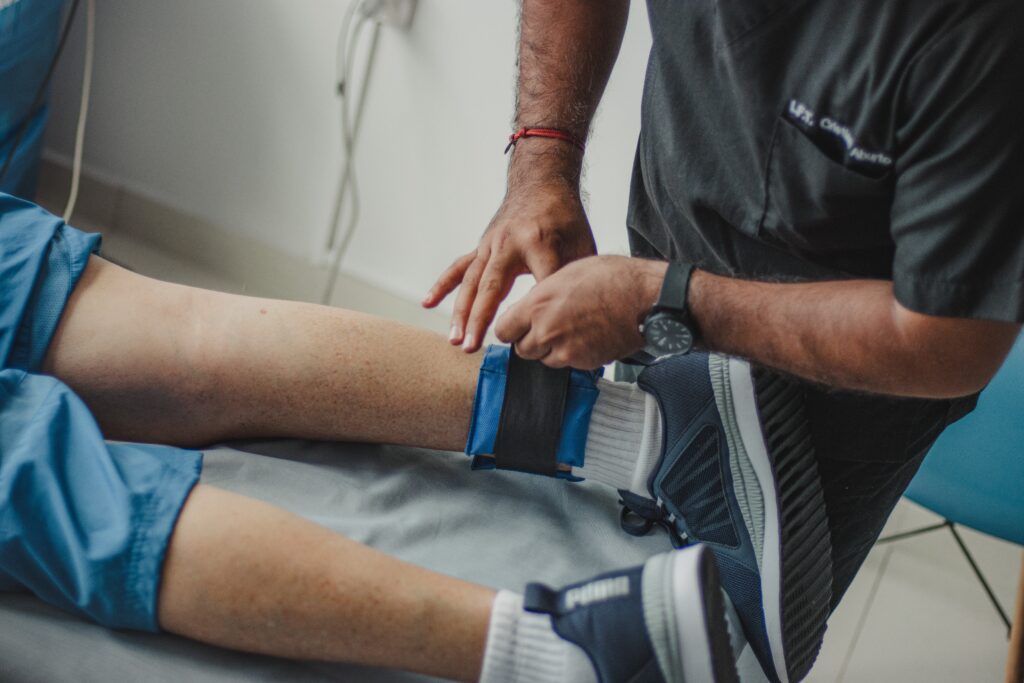How are Ankle and Back Pain Related?
Ankle and back pain often go hand in hand, as many medical experts will tell you. It’s important to understand the connection between these two areas of the body because ignoring it could lead to further problems down the line. With that in mind, let’s explore how ankle and back pain are related—and what can be done to help manage the issue if it arises. In this blog post, we’ll discuss why they’re connected and which types of treatments may provide relief from persistent soreness or discomfort in either area. We’ll also offer tips for preventing both ankle and back injuries so that you maintain a healthy lifestyle moving forward!
Understanding the Anatomy of Ankle and Back Pain
Ankle and back pain are two common discomforts that can significantly affect our daily lives. Understanding the anatomy of these areas can help us take better care of ourselves and prevent these pains from worsening. The ankle joint consists of several bones, tendons, and ligaments that work together to support our movements. When the ankle joint is injured, the ligaments or tendons can become inflamed, resulting in pain and swelling. Similarly, back pain can result from several factors such as poor posture, muscle strain, or spinal problems. It’s essential to identify the root cause of our pain and work with a medical professional to develop an effective treatment plan. With a better understanding of our bodies, we can take proactive steps toward pain relief and live a more comfortable life.
How Weak Ankles Impact Your Spine
If you’re someone who suffers from weak ankles, you might be surprised to know that this issue can actually have an impact on your spine. Weak ankles can lead to an imbalance in your body’s alignment, which can cause unnecessary pressure on your spine. This pressure can contribute to lower back pain and discomfort. Fortunately, there are exercises that you can do to strengthen your ankles and improve your overall posture. By taking the time to care for this small, but critical part of your body, you can help protect your spine and live a more pain-free life.
Types of Treatment Options for Ankle and Back Pain
When it comes to dealing with ankle and back pain, it’s crucial to explore the various types of treatment options available. Some of the most common methods include physical therapy, medications, surgery, and alternative therapies. Physical therapy involves exercises and stretches that can help strengthen and heal the affected area. Medications such as painkillers and anti-inflammatory drugs can also be used to manage pain. Surgery may be necessary in severe cases, but it’s usually a last resort. Alternative therapies like acupuncture, chiropractic care, and massage therapy can also provide relief. It’s important to consult with a healthcare professional to determine which treatment option is best suited for your specific needs.
Prevention and Exercises For Ankle and Back Pain Relief
Ankle and back pain can be a real issue for many people, impacting their daily lives and activities. However, there are ways to alleviate this pain and prevent it from happening in the first place. Engaging in exercises specifically targeted for ankle and back pain relief can not only reduce discomfort but also improve overall flexibility and strength. Prevention techniques, such as wearing supportive shoes and taking breaks when sitting for extended periods of time, can also make a significant difference. By incorporating these strategies into your daily routine, you can experience the benefits of pain-free ankles and backs, allowing you to fully enjoy all that life has to offer.
Common Misconceptions About the Connection Between Ankle and Back Pain
If you’ve ever experienced both ankle and back pain, you may have assumed that the two are completely unrelated. However, there are actually some common misconceptions surrounding the connection between these two areas of the body. It’s often assumed that ankle pain can cause back pain, or vice versa, but there’s more to the story. In reality, ankle and back pain can be linked through a variety of factors, including posture, gait mechanics, and muscle imbalances. By understanding how these factors can impact your body as a whole, you may be able to better prevent and treat both ankle and back pain in the long run.
How to Manage Long-term Ankle and Back Pain
Long-term ankle and back pain can be debilitating and significantly affect the quality of your daily life. While there is no single cure for chronic pain, there are several management strategies that can bring relief. These include regular exercise and stretching to maintain flexibility and strength, maintaining a healthy weight to reduce pressure on the joints, and using orthotic devices or appropriate footwear for support. Other options include physical therapy, massage, and acupuncture. In addition to these strategies, it is essential to manage stress levels and practice good sleep hygiene to support overall physical and mental well-being. By incorporating these pain management techniques into your daily routine, you can significantly reduce the impact of long-term ankle and back pain on your life.
Conclusion
In conclusion, ankle and back pain can be a complex and sometimes difficult area to understand and manage. Many people do not realize the connection between weak ankles and other areas of the body; however, if left untreated, the symptoms can worsen over time. This is why it’s so important to look into different treatment options like stretching, physical therapy, or even traditional medicine to help reduce the aches and pains that come with ankle & back pain. The key to managing a successful long-term relief plan is ensuring that you are taking preventive measures such as exercising regularly, eating a balanced diet, using proper posture techniques, and wearing supportive footwear. With all this in mind, hopefully, you have gained a better understanding of how your ankles and spine work together in order to maintain optimal health.

